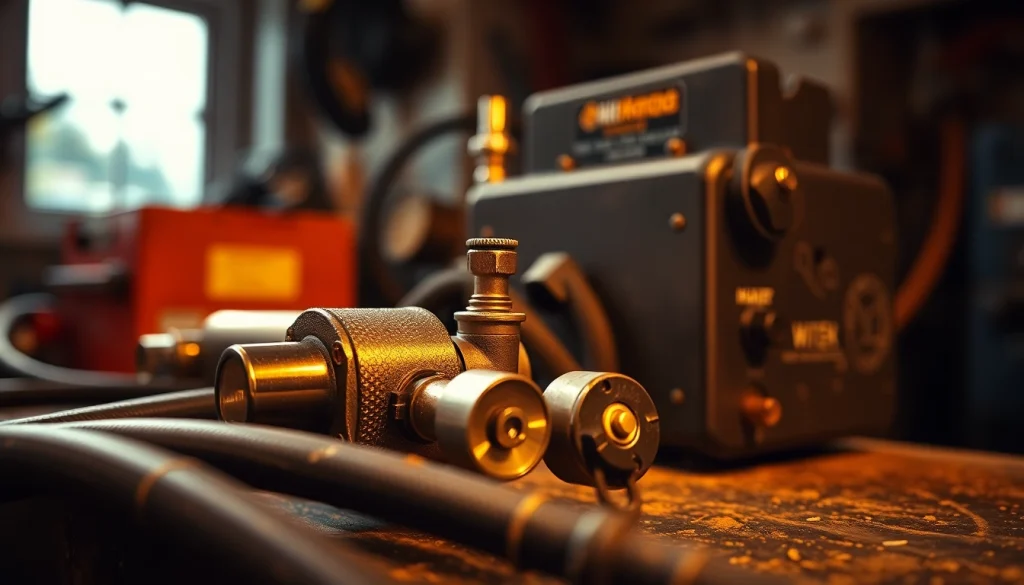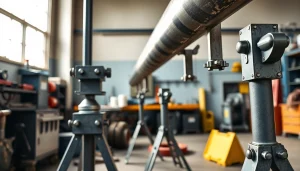
Introduction to Oxy Gas Welding Kits
In the world of welding, the right tools can make all the difference, particularly when it comes to versatile and efficient welding methods like oxy gas welding. An oxy gas welding kit combines essential components to create a powerful system for various welding and cutting applications. In this article, we will delve into what oxy gas welding kits consist of, how to choose the right one, safety considerations, and maintenance tips, ensuring you are well-prepared for both professional and DIY projects.
What is an Oxy Gas Welding Kit?
An oxy gas welding kit is a setup designed to perform welding and cutting operations utilizing the combustion of oxygen and a fuel gas—commonly acetylene. This method offers high-temperature flames that can reach up to 6,300°F (3,500°C), which makes it effective for tasks ranging from metal fabrication to automotive repair.
Key Components of Oxy Gas Welding Kits
Oxy gas welding kits typically feature the following essential components:
- Gas Cylinders: Two major gas cylinders are included—one for oxygen and another for acetylene. Understanding their sizes and pressures is crucial for safety and efficiency.
- Regulators: These devices control the flow of gas from the cylinders, ensuring precise adjustments for welding needs.
- Welding Torch: The welding torch combines the two gases and ignites them, allowing for versatile flame control perfect for various welding processes.
- Hoses: Flexible tubing connects the gas cylinders to the welding torch, often available in different sizes and colors for easy identification.
- Nozzles: These are used to shape and direct the flame; different nozzles cater to different welding tasks.
- Safety Gear: Accessories such as goggles, gloves, and fire-resistant clothing are vital for protecting the welder during operations.
Common Uses in Various Industries
Oxy gas welding kits are incredibly versatile, making them applicable in numerous industries. Here are some common uses:
- Manufacturing: Oxy gas welding is frequently used in metal welding tasks, assembly lines, and fabrication workshops.
- Automotive Repair: Many automotive technicians use these kits for tasks like exhaust repairs and bodywork.
- Construction: Welding for structural steel fabrication and repairs is a primary application in the construction sector.
- HVAC: Technicians frequently employ oxy gas welding for brazing copper tubing and other metal connections in HVAC systems.
- Art and Sculpture: Artists working with metal find oxy gas welding invaluable for creating unique pieces and sculptures.
Types of Oxy Gas Welding Kits
Standard vs. Heavy-Duty Oxy Gas Welding Kits
When selecting an oxy gas welding kit, understanding the distinction between standard and heavy-duty kits is essential. Standard kits are designed for light to medium tasks, suitable for DIY enthusiasts and hobbyists. They typically come with smaller gas cylinders and simpler components.
Conversely, heavy-duty kits are geared towards industrial applications, featuring larger gas cylinders for extended operations, robust regulators, and professional-grade torches. These kits are capable of handling thicker materials and can operate for longer periods without overheating.
Portable Oxy Gas Welding Kits for Home Use
Portable oxy gas welding kits have gained popularity for home use due to their convenience and flexibility. These kits are designed to be easily transported, often with lightweight components and smaller tanks. They are ideal for small repairs, outdoor projects, and even artistic endeavors. Many portable kits also include a carrying case for organized storage and transport.
Specialized Kits for Unique Applications
Certain welding projects may require specialized oxy gas welding kits. These can include:
- Plastic Welding Kits: Designed to melt and fuse plastic materials, they often come with different nozzles and lower temperature controls.
- Propane and Oxyacetylene Kits: Useful for specific tasks like brazing and light welding, these kits typically have modified equipment to accommodate different gases.
- Welding Kits for Artisans: Custom rigs may be available for artists who need specialized tools for intricate designs and projects.
How to Choose the Right Oxy Gas Welding Kit
Assessing Your Welding Needs
Your specific welding requirements will greatly influence your choice of an oxy gas welding kit. Consider the materials you’ll be working with and the types of projects you plan to undertake. For instance, if you primarily work with thin metals, a standard or portable kit may suffice. If dealing with heavier materials, a heavier kit with more robust capabilities will be necessary.
Budget Considerations and Cost Comparisons
Choosing a welding kit also hinges on your budget constraints. Standard kits can range from $100 to $300, while heavy-duty kits may exceed $500, especially with additional features. Make sure to compare prices and included components across different brands to ensure fairness in your budget allocation.
Top Brands and Models in the Market
Some reputable brands known for their quality oxy gas welding kits include:
- Victor: Highly regarded for their reliability and performance in industrial-grade equipment.
- Harris: Offers a wide range of kits suitable for both novices and professionals.
- Miller and Lincoln Electric: Provide durable and efficient kits designed specifically for heavy-duty applications.
Checking user reviews and expert recommendations can provide insight into the best models for your needs.
Safety Tips for Using Oxy Gas Welding Kits
Essential Safety Gear for Welders
Safety should always be a priority when using oxy gas welding kits. Essential gear includes:
- Welding Goggles: Protects the eyes from bright flames and harmful UV radiation.
- Gloves: Heavy-duty gloves shield hands from sparks and heat.
- Fire-Resistant Clothing: Long sleeves and pants made from non-flammable materials are advisable.
- Footwear: Steel-toed boots are recommended for foot protection in the work area.
Best Practices During Welding Operations
Adhering to best practices during welding can minimize risks:
- Work in a well-ventilated area to avoid inhalation of harmful fumes.
- Keep flammable materials away from the welding area to prevent accidents.
- Ensure all connections and hoses are secure to prevent leaks.
- Always have a fire extinguisher nearby and know how to use it properly.
- Be aware of your surroundings; maintain distance from others while welding.
Handling and Storing Gas Cylinders Safely
Gas cylinder handling requires extreme caution:
- Store cylinders upright in a cool, dry area away from direct sunlight.
- Ensure all cylinders are secured to prevent falling.
- Regularly inspect cylinders for leaks and damage.
- Never use tools that can create sparks when handling gas cylinders.
Maintaining Your Oxy Gas Welding Kit
Regular Maintenance Checks to Ensure Performance
Ongoing maintenance is critical for performance and safety. Conducting regular checks on components such as regulators, hoses, and nozzles can prevent potential issues. Look for cracks or leaks, ensure connections are intact, and clean any debris from torches and tips.
Cleaning and Storing Your Equipment
Maintaining a clean work environment helps prolong the life of your welding kit. After each use, clean the torch tips and regulators with appropriate solvents to avoid buildup. Ensure hoses are coiled and stored without kinks to prevent damage.
When to Replace Components in Your Kit
Knowing when to replace components is crucial for both performance and safety. If a hose is frayed or leaks, replace it immediately. Likewise, if a regulator is showing erratic pressure readings or your torch has damaged nozzles, it’s time to get a replacement to maintain effective welding practices.
Conclusion
Selecting the right oxy gas welding kit and understanding its components, as well as proper safety and maintenance practices, can enhance your welding outcomes significantly. With numerous options available in the market, assessing your needs and ensuring you commit to safety will lead to successful projects—whether you’re a professional welder or a DIY enthusiast.






